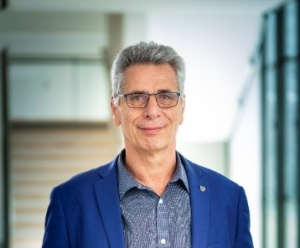OK01 Opening Keynote: Towards greener electronics and a 1000x gain in energy efficiency: co-optimizing innovative IC architectures, disruptive CMOS technologies and new EDA tools.
Jean-René Lèquepeys, CEA-Leti, France

Semiconductors and chips are ever-present in our current digital world. From smart sensors and the industrial Internet of Things to Digital Cities, personalized Medecine, Precision Agriculture, Vehicle Automation, and Cloud & High Performance Computing, semiconductor applications cover a very wide spectrum of society’s needs. However, global warming is highlighting the social and environmental impact of the digital transition, and the complex trade-offs and choices that lie ahead if we are to build a sustainable world. How do we pursue digitalization taking into account a limited power budget and the planetary limits? How do we make greener choices in the face of ever-increasing/aggressive competition? How do we choose the right digital performance for each application instead of a one-size-fits-all scenario, with a best performance for all approach? The semiconductor ecosystem is indeed facing a difficult dilemma with complex key tradeoffs.
With these stakes clearly in mind, the semiconductor community is performing disruptive research to provide greener electronics, able to attain very large gains in energy efficiency and just the right performance for each application. With the help of AI-boosted design methodologies and CAD tools, we have set out to co-optimize innovative CMOS technologies, disruptive chip architectures, computing models with new algorithms for embedded software.
This paper will provide an overview of the global semiconductor landscape and the challenge of mastering the data deluge for the entire semiconductor ecosystem. In order to face this challenge, we must all work together to reduce the collection, transport and storage of fruitless data.
This keynote will spend some time describing recent results from CEA-Leti and CEA-List’s research on sustainable and greener technologies.
To conclude, I will present an overview of the European Chips Act initiative, with the launch of the pilot lines, the Design Platforms and Competence Centers, a pan-European program that will be driving key milestones in the next five years to accelerate the accomplishment of our common goal of a sustainable and sovereign digital Europe.
Since 2019, Jean-René Lèquepeys is Deputy Director and program director of CEA-Leti.
He received his engineering degree in 1983 from Supélec School of Engineering and taught physics for 2 years in Ouarzazate, Morocco. He joined the CEA in October 1985, in Saclay in a laboratory focused on the evaluation of means of detection and intrusion, and became head of laboratory from 1997 to 1993. In 1993, he joined the system department (DSys) of the CEA-Leti, in Grenoble, as an R & D engineer in the field of image processing. He led many telecom projects before leading the "Telecom, Communicating Objects and Smart Card" programs in 1999.
In 2005, Jean-René Lèquepeys was appointed head of the Circuits Design Lab. of the system department. He then created, in partnership with the Ecole des Mines de Saint-Etienne, a laboratory dedicated to electronic components safety analysis located in Gardanne (Région Provence Alpes Côte d’Azur). He has been next instrumental in key evolutions of the CEA-Leti: in 2010, commissioned by both from Cea-Leti and Cea-List directors, he launched a new department, relying on original bi-site and bi-institute model. The Dacle focuses on Electronic Architectures, Integrated Circuit Design and Embedded Software. He next participated to the creation of the Department of Silicon Component (Dcos) in 2011, now a world-class structure for innovation in microelectronics. Jean-René led the Dcos till 2017.
In 2000, Jean-René Lèquepeys received for his pioneering work in the telecommunications field the prestigious award "Grand Prix de l'électronique Général Ferrié" awarded by the French Society for Electricity, Electronics and ICT. He is the author of about fifteen patents in this field


